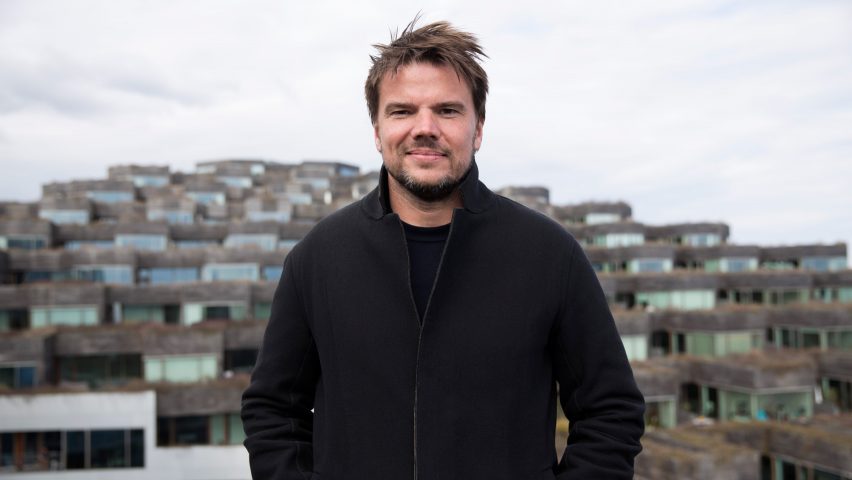
Architecture at its best is "pure fiction" says Bjarke Ingels in new Netflix documentary
Bjarke Ingels says BIG's "crazy ideas" have revolutionised how architecture is perceived by the general public, in a Netflix documentary series launching today.
Ingels, 42, the founder of Danish firm BIG, is the subject of the first in the eight-episode documentary series titled Abstract: The Art of Design.
In the episode, filmed in the lead-up to the installation of his Serpentine Gallery Pavilion in 2016, Ingels says BIG's "crazy ideas" have changed the public's view of what architecture should and can be.
"It should be like the documentary version of Inception," Ingels tells the film crew at the documentary's offset, referencing the Sci-Fi film.
"The whole premise of Inception is that, in real life, you can't really realise your dreams because you have so many constraints, but whereas in the dreamworld they could do all these kind of things," he says.
"When architecture is at its best that's what you're doing, you're coming up with something that is pure fiction."
Ingels' philosophy of "yes is more" – a play on the famous statement made by modernist architect Ludwig Mies Van Der Rohe – is a way of ensuring the fantastical is represented in BIG's work.
This approach has resulted in ambitious projects including a smoke-ring-belching power plant with a ski slope on its roof in Copenhagen and a pyramidal skyscraper in New York.
"We changed people's mindset of what is possible," he says. "Copenhageners got used to more crazy ideas so that, when we presented the idea of putting a ski slope on the roof of a power plant, I think it was an environment that we had already influenced a little bit over the last decade, so that it was receptive to that kind of thinking."
"We felt like we could propose something seemingly insane and actually get away with it."
But the architect says it has still been a struggle to change the traditional mindset of some residents in his native Copenhagen. He pinpoints his stint as an architecture student in Barcelona as giving him the courage to break with tradition.
"We were definitely seen as being alien in a Danish context, it is a culture were difference or disagreement is almost embarrassing," he says. "Whenever you talk about architecture and whenever people have opinions about architecture the most typical argument is something is bad because it doesn't fit in."
"If you go beyond indifference you will awaken a response in both extremes. Especially in the age of the internet," he adds, referencing the critical comments left on articles about his work.
The documentary hones in on some of the comments an Archinect article about his Hudson Yards scheme attracted, ranging from "BIG sucks. My 9 year old does more interesting shit in Minecraft" to "How can anyone take him seriously his website address is: www.big.dk".
He brushes this online criticism off as invalid: "If you read comments on blogs as if they are valid criticisms then you're going to have a very rough time. I really grew a thick skin."
"What changes over time is the naivety fades away, but it is replaced by another kind of confidence that will make you better at seizing the moment and grasping what is important," he says.
At the time of filming, BIG had completed over a dozen buildings and had a further 17 active construction sites worldwide, including a pair of twisting towers in Miami and floating student halls of residence in Copenhagen.
In recent years BIG has built ferociously and picked up a chain of prestigious jobs – from the small-scale Serpentine Gallery Pavilion to the mammoth Two World Trade Center tower in New York, earning Ingels and his firm a place at number 2 on the inaugural Dezeen Hot List.